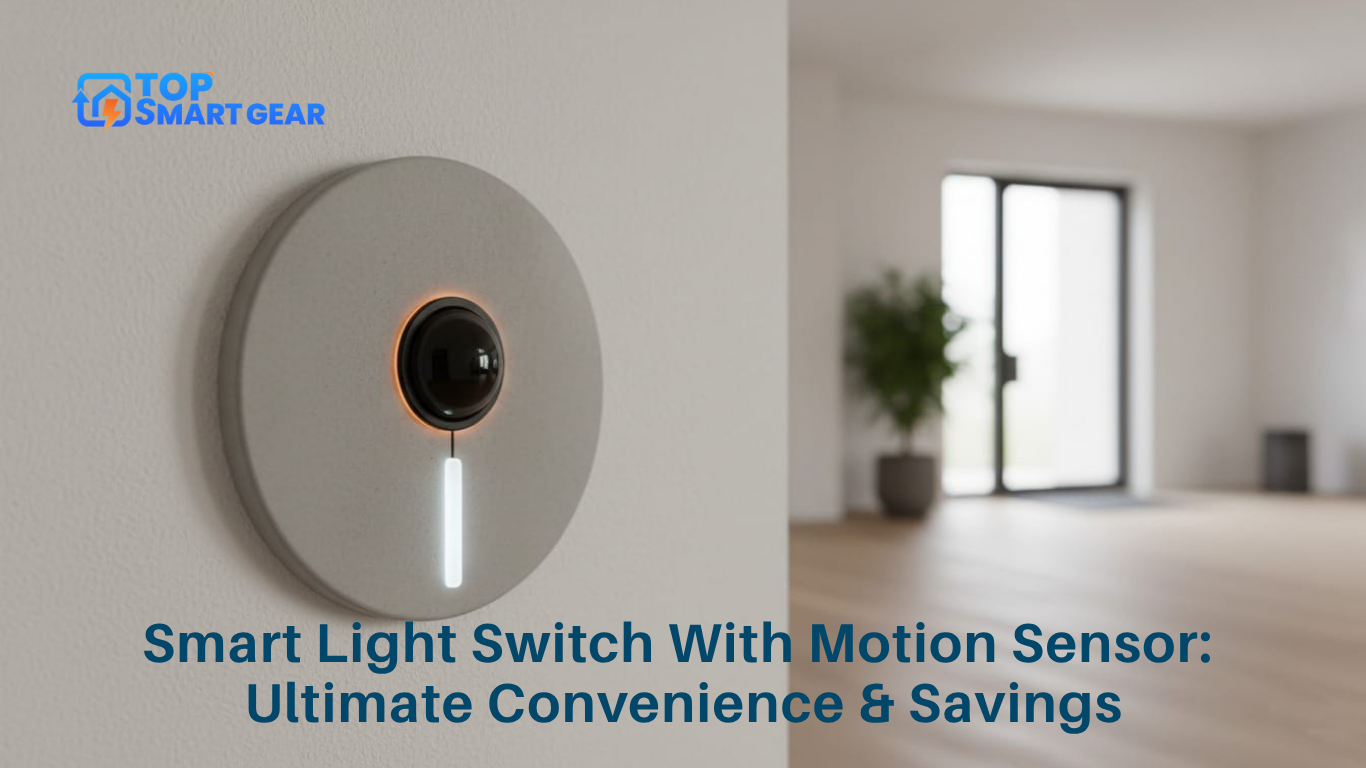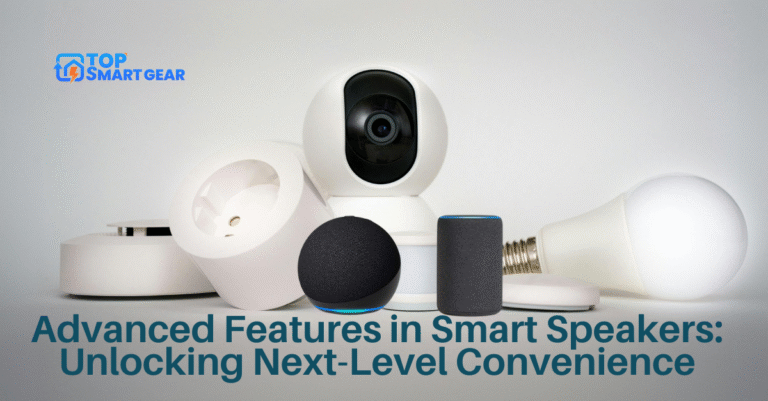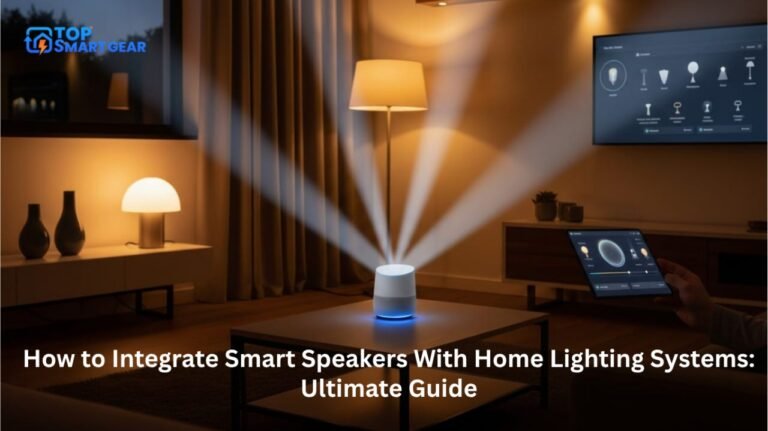Imagine walking into a room where a Smart Light Switch With Motion Sensor turns on the lights automatically, right when you need them. No fumbling for switches, no wasted energy from lights left on by accident, just effortless convenience and smart energy savings.
A smart light switch with a motion sensor can make this your everyday reality. If you want to save energy, add convenience, and boost your home’s modern feel, this simple upgrade can change the way you live. Keep reading to discover how this small device can bring big benefits to your space and why you’ll wonder how you ever lived without it.
Benefits Of Smart Light Switches
Smart light switches with motion sensors offer many benefits that improve daily life. These devices detect motion and automatically control lights. They save energy, add convenience, and boost home security. Installing a smart light switch with a motion sensor means lights turn on only when needed and switch off when rooms are empty. This technology makes homes smarter and more efficient without extra effort.

Energy Efficiency
Motion sensor light switches help reduce electricity use. They ensure lights stay on only when someone is in the room. This prevents wasting energy on empty spaces.
- The automatic shut-off light switch turns the lights off after no motion is detected.
- Lights adjust based on room occupancy, reducing unnecessary power consumption.
- Lower electricity bills due to more efficient lighting.
- Reduces carbon footprint by minimizing energy waste.
Here is a simple comparison of energy use with and without motion sensor switches:
| Lighting Type | Average Usage (hours/day) | Energy Saved (%) |
|---|---|---|
| Standard Switch | 6 | 0 |
| Motion Sensor Light Switch | 3 | 50% |
Using motion sensor switches can cut lighting time in half. This lowers the overall energy use in homes and offices.
Convenience And Automation
Smart light switches add ease to everyday tasks. Motion sensor light switches automatically turn on the lights. No need to fumble for switches in the dark.
Features that improve convenience include:
- Hands-free lighting when entering or leaving rooms.
- An automatic shut-off light switch saves the hassle of remembering to turn off lights.
- Customizable settings for light sensitivity and timer delays.
- Integration with smart home systems for voice control and remote access.
These benefits make life smoother:
- Walk into a room; lights come on instantly.
- Leave the room; lights turn off after a set time.
- Adjust settings easily through an app or voice commands.
Automation reduces manual tasks and ensures lights work exactly how users want. This technology suits families, elderly, and busy people well.

Enhanced Security
Smart light switches improve home safety. Motion sensor light switches create the effect of someone being home. Lights turn on automatically if motion is detected.
Security benefits include:
- Deterring intruders by simulating occupancy.
- Providing immediate light when entering dark areas reduces fall risk.
- Alert homeowners to unexpected movement in rooms or hallways.
Here is how a smart light switch adds security:
| Security Feature | Benefit |
|---|---|
| Motion Detection | Lights turn on to scare away intruders |
| Automatic Shut Off | Prevents lights staying on, avoiding suspicion |
| Remote Control | Manage lights from anywhere to enhance security |
Smart light switches with motion sensors make homes safer and more secure. They offer peace of mind, especially at night and during vacations.
How Motion Sensors Work
A smart light switch with a motion sensor brings convenience and energy savings to any space. These devices turn lights on or off automatically by detecting movement. Understanding how motion sensors work helps in choosing the right smart light switch for your home or office. Motion sensors detect physical movement in a certain area using different technologies. They send signals to the light switch to control lighting without manual effort. This seamless interaction between the motion sensor and the light switch enhances comfort and safety.
Types Of Motion Sensors
Motion sensors mainly fall into three categories based on how they detect movement. Each type has unique features and suits different environments.
- Passive Infrared (PIR) Sensors: Detect body heat changes. Common in homes and offices. Work best indoors.
- Ultrasonic Sensors: Emit sound waves and measure reflections. Detects movement even behind objects.
- Microwave Sensors: Send microwave pulses and track changes in the reflected waves. Cover a larger area than PIR sensors.
Here is a quick comparison:
| Sensor Type | Detection Method | Best Use | Pros | Cons |
|---|---|---|---|---|
| PIR | Body heat (infrared) | Indoor rooms | Energy efficient, low cost | Limited range, affected by temperature |
| Ultrasonic | Sound wave reflection | Complex spaces, corners | Detects behind objects | Can trigger false alarms |
| Microwave | Microwave pulse reflection | Large areas | Wide coverage | More expensive, sensitive |
Choosing the right sensor depends on the room size and lighting needs. PIR sensors suit small rooms. Ultrasonic fits tricky layouts. Microwave covers open spaces.
Detection Range And Sensitivity
Detection range and sensitivity define how well a motion sensor notices movement. The range is the maximum distance the sensor can detect motion. Sensitivity controls how small a movement triggers the sensor.
Typical detection ranges vary by sensor type:
- PIR Sensors: Usually 20 to 30 feet.
- Ultrasonic Sensors: Can reach up to 40 feet.
- Microwave Sensors: Range up to 50 feet or more.
Sensitivity settings prevent false triggers from pets or small objects. Higher sensitivity detects subtle movements but may cause unwanted activations. Lower sensitivity ignores minor motions but might miss some activity.
Many smart switches with motion sensors allow adjusting sensitivity. This helps tailor the sensor to room use and avoid wasted energy. Here are key points to consider:
- Set sensitivity based on room size and traffic.
- Reduce sensitivity in pet-friendly areas.
- Test sensor response before final installation.
- Adjust the range to avoid detecting movement outside the target zone.
Correct detection range and sensitivity improve the smart light switch’s efficiency. It ensures lights only turn on when needed, saving electricity and extending bulb life.
Integration With Light Switches
Motion sensors integrate with light switches to automate lighting. The sensor detects movement and sends a signal to the smart light switch to turn lights on or off. This system removes the need for manual control.
Integration options vary:
- Built-in Motion Sensor Switches: Combine sensor and switch in one device. Easy to install and use.
- Separate Sensor Modules: Work with existing switches. Connect via wireless or wired links.
- Smart Home Systems: Use a motion sensor to automate light switches through hubs or apps.
Benefits include:
- Hands-free operation.
- Energy savings by turning off lights automatically.
- Improved safety in dark areas.
- Customizable settings for time delays and sensitivity.
Installation requires wiring knowledge for built-in switches or simple pairing for wireless modules. The smart light switch with motion sensor fits well in hallways, bathrooms, and garages. Integration makes lighting intuitive and efficient.
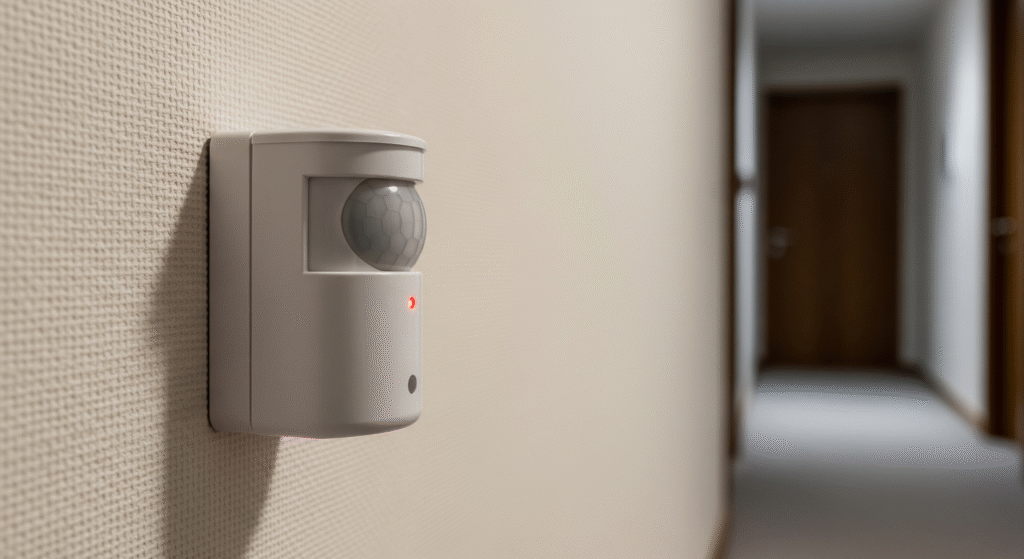
Features To Look For
Choosing the best smart light switch with motion sensor means understanding the key features that make it practical and efficient. These switches not only save energy but also add convenience to your daily life. To pick the right one, focus on features that match your home setup and personal needs. The most important features include compatibility with your home systems, adjustable motion-detection settings, and power-source options that fit your wiring and lifestyle.
Compatibility With Home Systems
Compatibility plays a vital role when selecting a motion-activated light switch. It should integrate seamlessly with your existing smart home system for smooth operation. Many households use platforms such as Google Home, Amazon Alexa, or Apple HomeKit. Opt for a voice-controlled smart switch that supports these systems to enjoy effortless home automation and convenience.
Check the following points for compatibility:
- Smart Home Platforms: Ensure the switch supports your preferred system.
- Wi-Fi or Hub Requirements: Some switches need a hub, others connect directly to Wi-Fi.
- Electrical Wiring: Confirm the switch fits your home wiring, especially if you have a neutral wire.
| Home System | Works With | Notes |
|---|---|---|
| Google Home | Most | Voice commands and app control |
| Amazon Alexa | Most | Works with Echo devices |
| Apple HomeKit | Fewer | Requires HomeKit-certified switch |
Ensuring your smart switch matches your home system makes setup easier. It also improves your experience with automation and voice control.
Adjustable Settings
Adjustable settings make a smart light switch with motion sensor flexible. You can customize how it reacts to movement and light. This helps save energy and improves convenience.
Look for these adjustable features:
- Motion Sensitivity: Change how far or close the sensor detects movement.
- Timeout Duration: Set how long the light stays on after motion stops.
- Ambient Light Sensor: Prevent lights from turning on during daylight.
- Detection Angle: Control the area covered by the motion sensor.
Adjusting these settings lets you create the perfect balance between safety, comfort, and power saving. For example, in a hallway, you may want a short timeout and high sensitivity. In a garage, longer timeout and lower sensitivity might work better.
| Setting | Description | Benefit |
|---|---|---|
| Motion Sensitivity | Distance sensor detects movement | Reduces false triggers |
| Timeout Duration | Light off delay after no motion | Energy saving |
| Ambient Light Sensor | Detects natural light levels | Avoids unnecessary lighting |
Power Source Options
The power source is a key factor for the best smart light switch with motion sensor. It must fit your home’s electrical setup. Most smart switches need a neutral wire, but some models work without one.
Understand your options:
- Neutral Wire Required: Most smart switches need a neutral wire to power the sensor and Wi-Fi module.
- No Neutral Wire Needed: Some models use alternative wiring or batteries, ideal for older homes.
- Battery-Powered: Portable but requires regular battery changes.
- Hardwired: Connects directly to your home’s electrical system for constant power.
Choosing the right power source ensures easy installation and reliable operation. Check your home wiring before buying to avoid extra costs or complex changes.
| Power Source | Pros | Cons |
|---|---|---|
| Neutral Wire | Reliable power, stable operation | Not available in all homes |
| No Neutral Wire | Works in older homes, easier retrofit | Limited switch options |
| Battery-Powered | Easy installation, no wiring changes | Needs battery replacement |

Installation Tips
Installing a smart light switch with a motion sensor can improve convenience and save energy. Proper installation helps the device work correctly and lasts longer. Follow simple tips to make the process easier and safer. Understanding wiring, choosing the right spot, and taking safety steps are key parts of installation.
Wiring Basics
Wiring is the first step in installing a smart light switch with a motion sensor. Knowing the basics ensures the switch works well and avoids damage. Most smart switches need a neutral wire to power the sensor and smart features.
- Turn off the power at the circuit breaker before starting any wiring work.
- Identify wires: You will usually find a line (hot) wire, load wire, neutral wire, and ground wire.
- Line wire: Brings power from the breaker to the switch.
- Load wire: Sends power from the switch to the light fixture.
- Neutral wire: Needed for the smart switch to work correctly, often white.
- Ground wire: For safety, usually green or bare copper.
Use a voltage tester to check wires before touching them. Connect wires according to the smart switch manual. Usually, the connections look like this:
| Wire Type | Function | Color |
|---|---|---|
| Line (Hot) | Power source from breaker | Black or red |
| Load | Power to light fixture | Black or red |
| Neutral | Completes circuit for switch | White |
| Ground | Safety grounding | Green or bare copper |
Secure wire connections with wire nuts. Place wires neatly inside the box. Attach the switch and cover plate. Restore power and test the switch for proper function.
Placement For Optimal Detection
Proper placement of the motion sensor helps it detect movement accurately. Position the switch where it covers the area you want to monitor, such as hallways, entrances, or rooms.
- Height: Install the switch at standard wall switch height, about 48 inches from the floor.
- Field of view: The sensor usually covers a 90 to 180-degree area. Place it where it can see the main traffic path.
- Avoid obstacles: Keep the sensor clear of furniture, doors, or curtains that block its view.
- Distance: Check the sensor’s detection range, often 10 to 30 feet. Position it within this range from the area you want to monitor.
- Lighting conditions: Avoid direct sunlight on the sensor, as it may cause false triggers.
Test the sensor after installation by walking through the detection zone. Adjust the angle or position if needed. Some switches allow sensitivity settings for better accuracy.
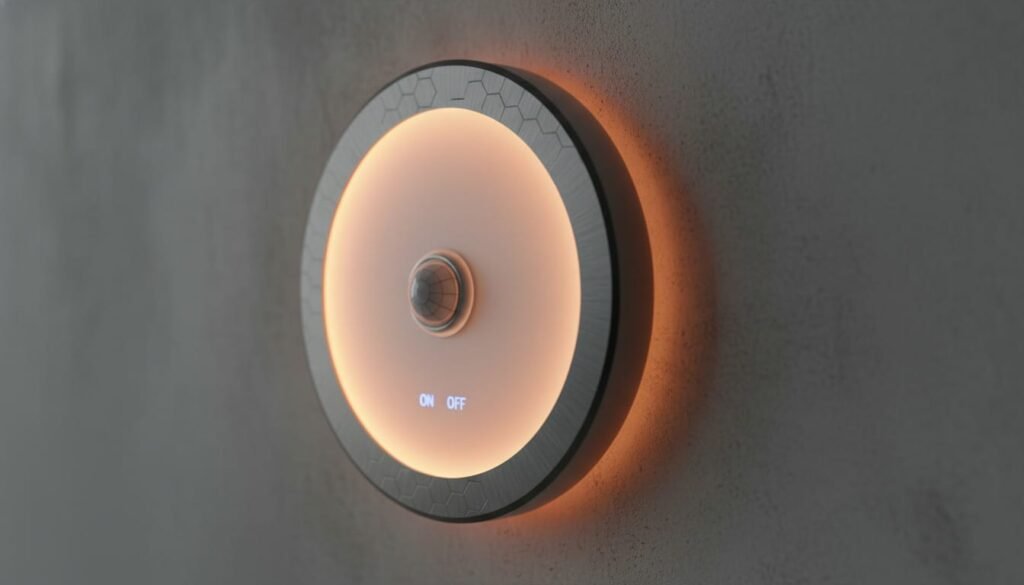
Safety Precautions
Safety is critical when installing electrical devices. Follow these precautions to prevent accidents and damage.
- Power off: Always switch off the power at the breaker before working on wiring.
- Use tools carefully: Use insulated tools to avoid electric shocks.
- Check voltage: Confirm no live current with a voltage tester before touching wires.
- Follow instructions: Read the smart switch manual fully before installation.
- Secure connections: Tighten wire nuts and screws to prevent loose connections.
- Do not overload: Make sure the switch matches the electrical load of your lights.
- Professional help: Call an electrician if unsure about wiring or safety.
Wearing safety glasses and gloves adds protection. Keep the work area dry and clean. Proper safety habits reduce risk and ensure a smooth installation.
Popular Brands And Models
Smart light switches with motion sensors bring convenience and energy savings to any home. Several brands offer models with different features, designs, and price points. Choosing a popular brand helps ensure good quality and customer support. Here, we explore some well-known brands and their top models, helping you find a switch that fits your needs and budget.
Top-rated Options
Certain smart light switches stand out for their reliability, ease of use, and sensor accuracy. These models often receive high ratings from users and experts. Here are some top-rated options:
- Lutron Caséta Wireless – Known for simple setup and smooth integration with smart home systems.
- TP-Link Kasa Smart Switch – Offers strong motion detection and good app control at a fair price.
- Leviton Decora Smart – Combines sleek design with customizable sensor settings.
- GE Enbrighten – Provides reliable sensor performance with easy installation.
Below is a quick comparison of key features for these models:
| Brand & Model | Motion Sensor Range | Smart Home Compatibility | Price Range | Special Features |
|---|---|---|---|---|
| Lutron Caséta Wireless | 15 feet | Alexa, Google, Apple HomeKit | $$$ | Wireless bridge needed, no neutral wire required |
| TP-Link Kasa Smart Switch | 20 feet | Alexa, Google Assistant | $$ | Remote control via app, energy monitoring |
| Leviton Decora Smart | 30 feet | Alexa, Google, Apple HomeKit | $$$ | Adjustable sensor sensitivity, dimming support |
| GE Enbrighten | 25 feet | Alexa, Google Assistant | $$ | Easy installation, motion sensor timeout settings |
Price Vs. Performance
Smart light switches with motion sensors vary widely in price. The cost depends on brand, features, and smart home compatibility. Balancing price and performance ensures you get value without overspending.
Lower-priced models often include basic motion detection and app control. Mid-range options add better sensor range, adjustable settings, and wider compatibility. Higher-end switches offer advanced features like voice assistant integration and energy tracking.
Consider these points before buying:
- Sensor accuracy: More precise motion sensors reduce false triggers.
- Installation needs: Some models require a neutral wire or a hub.
- App usability: User-friendly apps make it easier to control lights.
- Smart home support: Check if the switch works with your preferred voice assistant.
Here is an overview comparing typical price ranges and what you get:
| Price Range | Features Included | Best For |
|---|---|---|
| $30 – $50 | Basic motion detection, app control | Small rooms, budget setups |
| $50 – $80 | Improved sensor range, voice assistant support | Most homes, moderate smart setups |
| $80 and above | Advanced features, multi-device integration, energy monitoring | Smart homes with many devices, tech enthusiasts |
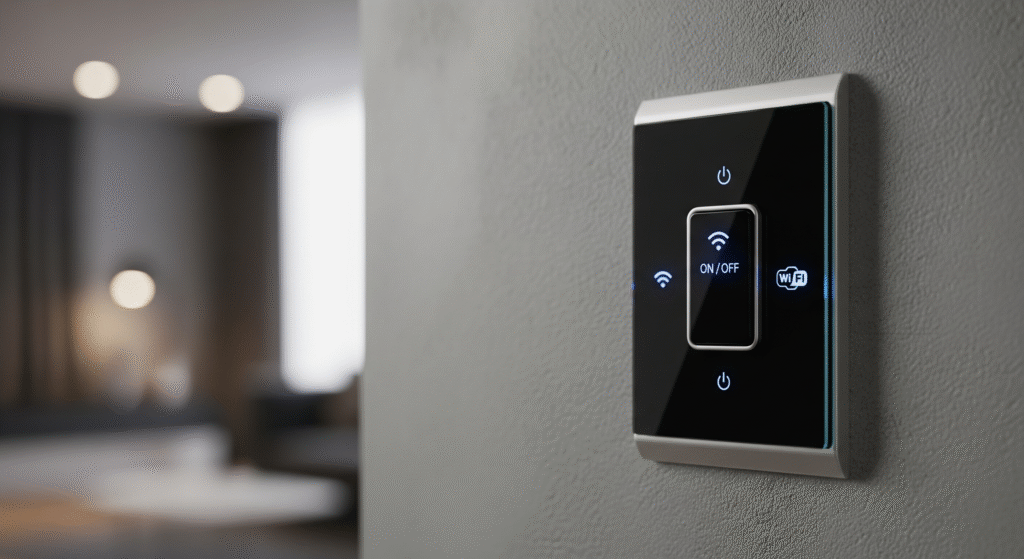
User Reviews
Customer feedback reveals how smart light switches perform in real homes. Users often praise switches that are easy to install and have responsive motion sensors. Some common positives include:
- Automatic lights save energy and add convenience.
- Good app control enhances daily use.
- Compatibility with voice assistants simplifies operation.
Common complaints focus on sensor sensitivity and setup issues. Some users report:
- False triggers from pets or sunlight.
- Difficulty with wiring, especially without a neutral wire.
- Occasional app glitches or connectivity problems.
Here is a summary of user ratings from popular sites:
| Model | Average Rating | Number of Reviews | Noted Pros | Noted Cons |
|---|---|---|---|---|
| Lutron Caséta Wireless | 4.7 / 5 | 5,000+ | Reliable, easy setup, no neutral wire | Requires separate bridge |
| TP-Link Kasa Smart Switch | 4.5 / 5 | 3,500+ | Good sensor range, affordable | Some app lag reported |
| Leviton Decora Smart | 4.4 / 5 | 2,000+ | Customizable, stylish design | Needs neutral wire |
| GE Enbrighten | 4.3 / 5 | 1,800+ | Easy install, good sensor | Limited app features |
Troubleshooting Common Issues
The Smart Light Switch with Motion Sensor offers convenience and energy savings by detecting motion and automatically controlling your lights. Despite its benefits, some users face common issues that affect performance. Troubleshooting these problems helps maintain smooth operation and extends the device’s life. This guide covers frequent challenges and clear steps to resolve them quickly.
Sensor Malfunctions
Sensor malfunctions can cause the light switch to turn on or off at the wrong times or not respond to motion at all. These issues often stem from environmental factors or device settings.
- Dirty sensor lens: Dust or dirt can block the sensor, reducing sensitivity.
- Incorrect sensor angle: The sensor must face the area where movement is expected.
- Interference from heat sources: Heat from vents or appliances can trigger false detections.
- Low battery (for battery-powered models): Weak power affects sensor accuracy.
Check sensor placement and clean the lens regularly. Adjust the sensor angle so it covers the desired area without obstructions.
| Problem | Possible Cause | Solution |
|---|---|---|
| Light does not turn on | Sensor blocked or dirty | Clean lens and remove obstructions |
| Light stays on constantly | Heat interference or incorrect angle | Relocate sensor or adjust angle |
| Light flickers | Weak battery or loose wiring | Relocate sensor or adjust the angle |
Connectivity Problems
Smart light switches rely on Wi-Fi or smart home hubs to work properly. Connectivity problems can stop the switch from responding to app controls or automation.
Common causes include:
- Weak Wi-Fi signal: Distance or obstacles reduce signal strength.
- Incorrect network settings: Wrong password or network type can block access.
- Firmware or app issues: Outdated software may cause communication errors.
- Router restrictions: Firewalls or parental controls may limit device access.
Steps to fix connectivity problems:
- Move the router closer to the switch or use a Wi-Fi extender.
- Verify network name and password in the device settings.
- Update the smart switch firmware and mobile app regularly.
- Check the router settings and temporarily disable any restrictive features.
| Issue | Cause | Fix |
|---|---|---|
| Switch offline in app | Wi-Fi signal weak | Improve signal or move router |
| Enter the correct Wi-Fi password | Wrong password | Switch offline in the app |
| Delayed response | Firmware outdated | Update firmware and app |
Reset And Maintenance
Regular maintenance keeps the smart light switch working well. Resetting the device can solve many persistent issues by restoring factory settings.
Reset steps vary by model but often include:
- Turn off the power to the switch at the circuit breaker.
- Press and hold the reset button for 10 seconds.
- Release the button and restore power.
- Set up the switch again through the app.
Maintenance tips:
- Clean the switch surface and sensor lens monthly.
- Check wiring connections annually to avoid loose contacts.
- Keep firmware and app updated for best performance.
- Test motion detection regularly by walking through the sensor area.
Note: Always turn off the power before handling electrical components to ensure safety.

Future Trends In Smart Lighting
The future of smart lighting promises smarter, more efficient, and user-friendly solutions. Smart light switches with motion sensors are at the forefront of this change. These switches adapt to human presence, making homes safer and more energy-efficient. Innovations in this field will reshape how people interact with lighting in their homes and offices. The following trends highlight key areas where smart lighting technology is evolving rapidly.
Advancements In Sensor Technology
Sensor technology in smart light switches is becoming more precise and versatile. Motion sensors now detect smaller movements and can differentiate between pets and people. This reduces false activations and improves user experience.
New sensors combine multiple detection methods:
- Infrared (IR) sensors: Detect body heat for presence sensing.
- Ultrasonic sensors: Use sound waves to sense motion in complex spaces.
- Ambient light sensors measure natural light to adjust indoor lighting automatically.
These combined sensors provide better accuracy and energy savings. Sensors also adjust sensitivity depending on the time of day or room use.
| Sensor Type | Function | Benefit |
|---|---|---|
| Infrared (IR) | Detects body heat and movement | Accurate presence detection |
| Ultrasonic | Senses motion using sound waves | Detects through obstacles and around corners |
| Ambient Light | Measures natural light levels | Adjusts brightness automatically |
These improvements lead to more reliable and energy-efficient smart switches. Users enjoy lights that turn on only when needed, offering convenience and savings.
Integration With Smart Homes
Smart light switches with motion sensors fit perfectly into broader smart home systems. They connect easily with devices like voice assistants, security cameras, and thermostats.
Integration benefits include:
- Voice control: Turn lights on/off using Alexa, Google Assistant, or Siri.
- Automation routines: Link lighting with daily schedules or other smart devices.
- Remote access: Control lights from anywhere via smartphone apps.
- Security: Simulate presence by turning lights on/off while away.
Smart home hubs manage these devices easily. Users can create custom scenes, such as dimming lights when watching movies or brightening for work.
The table below shows common smart home platforms supporting smart switches:
| Platform | Compatibility | Key Features |
|---|---|---|
| Amazon Alexa | Wide device support | Voice control, routines, remote access |
| Google Home | Works with many brands | Voice commands, automation, scheduling |
| Apple HomeKit | Secure and private | Voice via Siri, scenes, remote control |
Integration creates a seamless smart home experience. Lighting adapts to user habits and enhances comfort and security.
Energy Saving Innovations
Energy efficiency remains a top priority in smart lighting development. Motion sensor switches reduce wasted energy by automatically turning off lights in empty rooms.
New innovations focus on:
- Adaptive brightness: Adjust lighting levels based on natural light and activity.
- Learning algorithms: Smart switches learn user behavior and optimize lighting schedules.
- Low power consumption: Sensors and switches use less energy themselves.
These features lower electricity bills and reduce environmental impact. Smart switches can also work with LED lights, which consume less power and last longer than traditional bulbs.
Below is a simple comparison of energy use:
| Lighting Type | Average Power Use | Lifespan |
|---|---|---|
| Incandescent Bulb | 60 watts | 1,000 hours |
| LED Bulb | 10 watts | 25,000 hours |
| Smart Switch with Sensor | Less than 1 watt | 10+ years |
Energy-saving smart switches contribute to greener homes and lower costs. They make eco-friendly living easier and more accessible.
Frequently Asked Questions
What Is A Smart Light Switch With Motion Sensor?
A smart light switch with motion sensor automatically controls lighting. It detects movement to turn lights on or off. This saves energy and adds convenience. It’s ideal for homes, offices, and public spaces needing hands-free lighting control.
How Does A Motion Sensor Light Switch Work?
The motion sensor detects infrared heat and movement in its range. When it senses motion, it triggers the switch to turn lights on. After no motion is detected for a set time, it turns lights off. This improves energy efficiency and user comfort.
Are Smart Motion Sensor Switches Energy Efficient?
Yes, they reduce energy waste by turning lights off when no one is present. This prevents lights from staying on unnecessarily. Energy savings vary but can significantly lower electricity bills. They are eco-friendly and help promote sustainable energy use.
Can Smart Light Switches With Motion Sensors Be Installed Easily?
Most smart motion sensor switches fit standard electrical boxes and replace existing switches. Basic wiring knowledge is helpful, but many models include clear instructions. Some require a neutral wire. Professional installation is recommended if you are unfamiliar with electrical work.
Conclusion
Smart light switch with motion sensor brings ease to daily life. They save energy by turning off lights when no one is around. Installation is simple and fits most homes. These switches add safety by automatically lighting dark rooms. They also help reduce electricity bills over time.
Choosing one can make your home smarter and greener. Small changes like this improve comfort and convenience. A smart light switch is a smart choice for any home.

